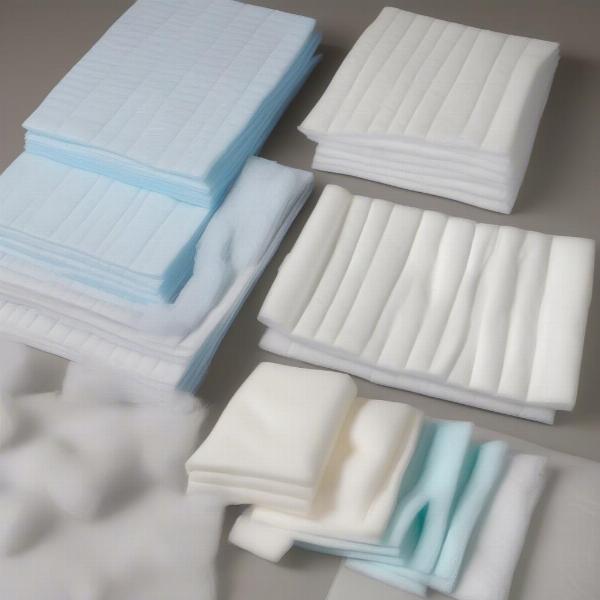Dog trays, often overlooked, play a crucial role in maintaining a clean and organized home for dog owners. Whether you’re house-training a puppy, managing an elderly dog prone to accidents, or simply seeking a designated feeding area, selecting the appropriate dog tray is essential. This guide delves into the various aspects of dog trays, from choosing the right size and material to cleaning and maintenance tips.
Types of Dog Trays and Their Uses
Dog trays come in a variety of shapes, sizes, and materials, each catering to specific needs. Understanding these differences can help you make an informed decision.
Puppy Training Pads
These absorbent pads are ideal for house-training puppies. They provide a designated spot for puppies to relieve themselves indoors, minimizing accidents and simplifying cleanup.
Food and Water Trays
These trays prevent spills and keep the feeding area tidy. They often come with non-slip bottoms to prevent movement during mealtimes. Stainless steel and plastic are popular choices for durability and easy cleaning.
Pet Loo Trays
Ideal for apartment dwellers or those with limited outdoor access, pet loo trays offer a convenient indoor potty solution. They usually consist of a plastic tray with a removable grate and absorbent pads or synthetic grass.
 Puppy Training Pads
Puppy Training Pads
Choosing the Right Size and Material
Selecting the right size is crucial for your dog’s comfort and the tray’s effectiveness. Measure your dog’s length and width to ensure the tray is spacious enough. Material choice depends on your specific needs and preferences.
Stainless Steel
Durable and hygienic, stainless steel trays are easy to clean and resist odor and bacteria buildup. They are a good choice for messy eaters or dogs prone to chewing.
Plastic
Lightweight and affordable, plastic trays come in various colors and designs. They are easy to clean but may be less durable than stainless steel.
Silicone
Flexible and non-slip, silicone trays are a good option for travel or outdoor use. They are easy to clean and store.
Cleaning and Maintaining Your Dog Tray
Regular cleaning is essential to prevent bacterial growth and maintain hygiene. Wash the tray with warm soapy water and disinfect it regularly. For absorbent pads, dispose of them properly and replace them frequently.
Tips for Easy Cleaning
- Rinse the tray immediately after use to prevent stains and odors.
- Use a pet-safe disinfectant to kill bacteria and germs.
- Avoid harsh chemicals that can harm your dog.
What if My Dog Won’t Use the Tray?
Sometimes, dogs might resist using their designated tray. Patience and positive reinforcement are key. Try placing a soiled pad on the tray to encourage your dog to associate it with the correct spot. Reward your dog for using the tray correctly with treats and praise.
Conclusion
Choosing the right dog tray can significantly enhance your and your dog’s quality of life. By considering factors like size, material, and purpose, you can find the perfect tray to meet your dog’s needs and keep your home clean and organized. Remember that consistency and positive reinforcement are essential for successful training.
FAQ
- How often should I clean my dog’s tray? Ideally, after each use. At a minimum, clean it daily.
- What’s the best material for a dog tray? Stainless steel is durable and hygienic, while plastic is affordable and lightweight.
- Can I use a dog tray for cats? Yes, some dog trays are suitable for cats, but consider the size and type.
- How do I get my dog to use the tray consistently? Positive reinforcement and patience are key. Reward successful use with treats and praise.
- What size tray should I get for my puppy? Choose a size that allows your puppy to comfortably turn around and lie down.
- Are there eco-friendly dog tray options? Yes, look for biodegradable or compostable pads and trays made from recycled materials.
- Where should I place the dog tray? Choose a quiet, accessible location away from your dog’s food and water.
At [ILM Dog**](https://ilmdog.com), we are dedicated to providing dog owners with reliable information and resources to enhance their pets’ well-being. From breed selection and health care to training and nutrition, we offer expert guidance every step of the way. Need personalized advice? Reach out to our team at [email protected] or call us at +44 20-3965-8624.